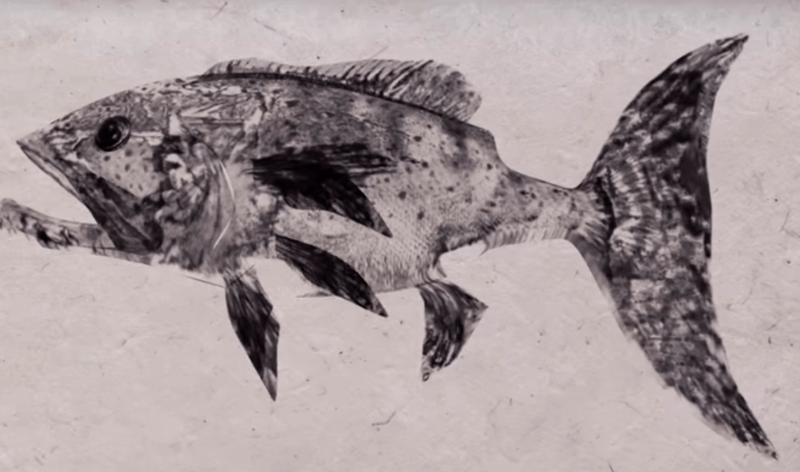
Art and science have found fusion in a feudal Japanese art form called "Gyotaku". These records where gotten from museum pieces, other paper-based sources and old photographs too. But, there is a need for sturdier sources of archaic information that is not perishable. There are digital resources that are organized by citizen science projects as online resources.
In the Edo period in "Japan" was the time "gyotaku" art proliferated, made by fishermen by making a fish impression or rubbing from the specimens they caught. Impressions of the fish were not the only record, included were other relevant details that the local name of the fish and what hook caught it. Most important about these details was the date of the catch and location. These increment data gave a way to track fish species as related to the state of biodiversity, during the EDO feudal period. Most of the "gyotaku" material is dated from 1839 in the Tsuruoka City Library in Japan.
The process of making these fish imprints is with black ink, but the production of colored versions of "gyotaku" is now the norm. This art and science combo is utilized for art or education uses, it is not coincidental, but processes like "gyotaku" are normal before advanced ways to record evidence.
As an art form, it has been impacted by modernization in the digital age, which is quick and convenient than using old-style "gyotaku" as records for the fishermen. Looking for shops that sell this form of science/art hybrid which keeps a non-digital record, they are dwindling fast, and artist "recreational" fishermen might disappear soon. It will be the loss of demand for such rare art/science combos, because of the preference of higher technology over traditional art methods.
One argument that might make sense is the purpose fish imprinting fulfilled, before cameras and modern imaging gadget. Analog records like books and pictures have a shelf life but can be reproduced, unlike data once deleted it is gone. Artforms like "gyotaku" is a form of heritage that should continue to be reproduced but applying modern science to make them last longer too.
Unknowingly, the sources of these fish imprints like the older Edo era prints may disappear forever without active measures to preserve them. Here imaging devices are the perfect tool that will capture a visual record of "gyotaku" as heritage sources in data form. Its decline is inevitable if it is not needed but from a cultural point. An important task is to save the last sources of the information as well.
Surveys were undertaken in Japan by Yusuke Miyazaki, gathering information in surveys that asked if the "gyotaku" information is readily acquired in all of Japan. The sources were a fishing shop that produced the artform and still sold rubbings. A haul of 261 rubbings or prints, with 325 printed fish specimens was added to the saved data.
The success of "gyotaku" in preserving records of fish species is priceless, and outline where fish lived in Japan during feudal times. In continuing it the aspect of science, and art into an art form is rare, though it proves art and sciences do mix.
Read: On the edge between science and art: Historical biodiversity data from Japanese 'gyotaku'










